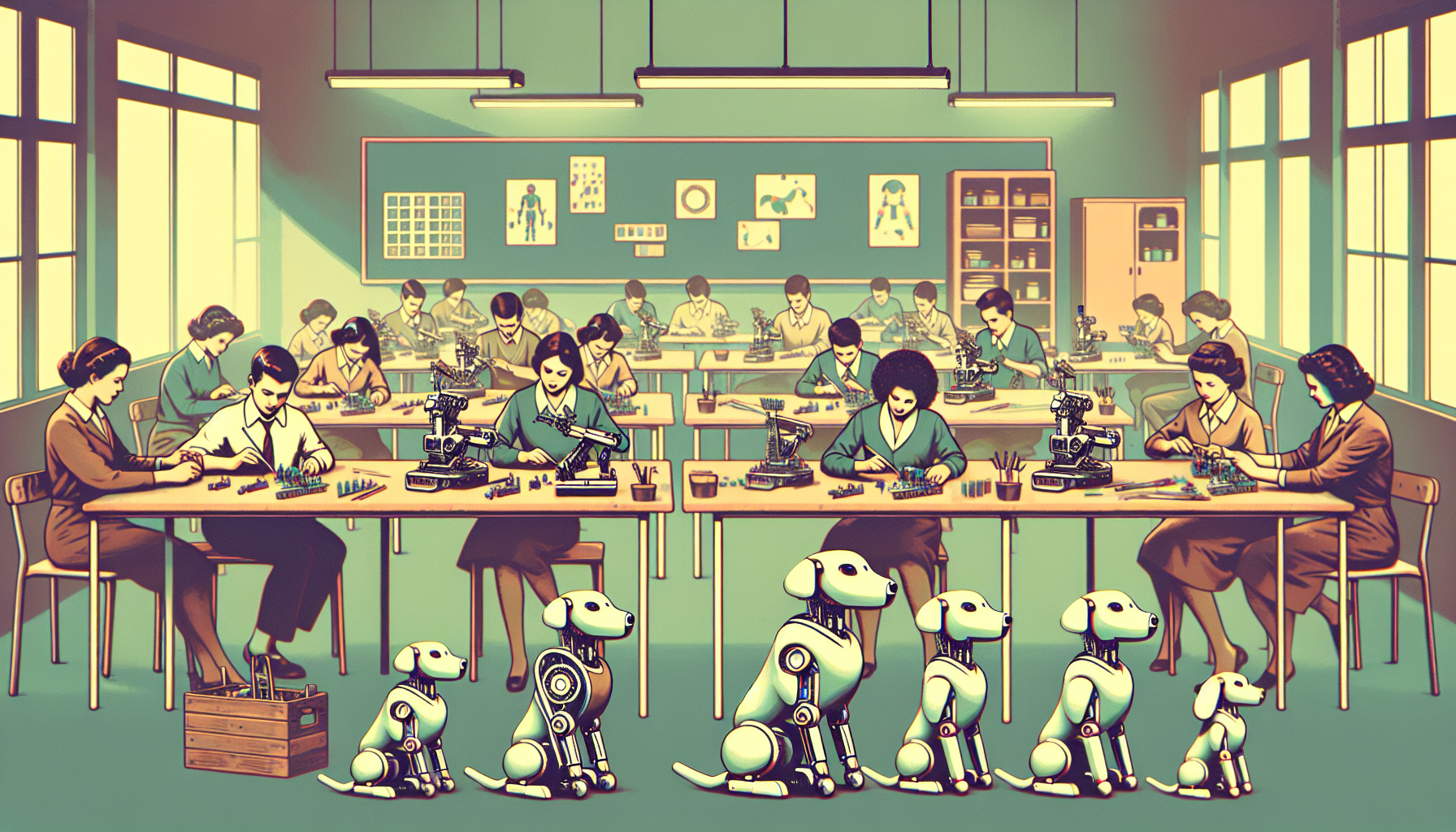Stanford University is setting a new standard in robotics education with its course, Computer Science 123. In this innovative class, students don’t just read about artificial intelligence—they build and program their own AI-powered robot dogs, called Pupper. Over ten weeks, students experience the journey of bringing a robot to life, from assembling hardware to teaching it how to think and move using AI.
From Idea to Reality: Building a Robot Dog
The story of Pupper began with another project—Doggo—created by the Stanford Student Robotics club in 2019. The goal was to make a four-legged robot that was affordable and open to all, not just specialists. Pupper was born from this philosophy of accessibility.
Computer Science 123, led by faculty members Stuart Bowers, Karen Liu, and Jie Tan, invites students to become true roboticists. They start by piecing together Pupper’s mechanical body. Motors, sensors, and circuits are carefully combined, teaching students the essentials of robotics engineering. This practical approach ensures that learners understand not just theory, but the real challenges of constructing a working robot.
Bringing Intelligence to Life
Once the robot’s physical form is ready, the journey turns digital. Students work with advanced programming tools to give Pupper “brains.” Through the power of neural networks, they teach Pupper how to walk, respond to commands, and react to its environment.
A key method in this training is reinforcement learning. Using computer simulations, Pupper can practice and improve rapidly. In these virtual worlds, Pupper learns from success and failure, mastering complex movements in days instead of weeks. By interacting with tools like OpenAI APIs, Pupper even begins to understand voice commands and gestures, making interactions more natural and intuitive.
Technology with a Human Touch
The impact of Pupper reaches far beyond the classroom. At Lucile Packard Children’s Hospital at Stanford, robot dogs have been used to comfort young patients. These robotic companions, alongside immersive technology, have helped children feel less anxious and more at ease during their hospital stays. The presence of Pupper brings joy and distraction, turning difficult moments into opportunities for connection and healing.
This real-world application shows that robotics, combined with AI, can have a meaningful effect on people’s lives. It points to a future where technology supports not just industry, but also social and emotional well-being.
Open Source and Accessible to All
Pupper’s design and software are shared openly. Anyone with curiosity and dedication can access the documentation and build their own robot for about $2000. This open-source approach invites educators, hobbyists, and students from around the world to join the movement. Resources, guides, and community forums create a collaborative environment where new ideas can flourish and where everyone can contribute to improvement.
By breaking down barriers, Stanford ensures that learning about robotics and AI is not limited to a select few. This spirit of openness helps grow a vibrant community of innovators who are ready to shape the next generation of intelligent machines.
Inspiration for the Future
Stanford’s Mini AI Robot Dog Project is more than a classroom exercise. It’s a model for how education can lead to true innovation. By guiding students through both mechanical creation and AI programming, the course prepares them to solve real-world problems and invent new tools for society.
Pupper stands as proof that hands-on learning, when combined with open access, can unlock talent and creativity across the globe. The project’s reach—in classrooms, hospitals, and beyond—demonstrates the profound possibilities when technology is guided by vision and care for people.

Leave a Reply